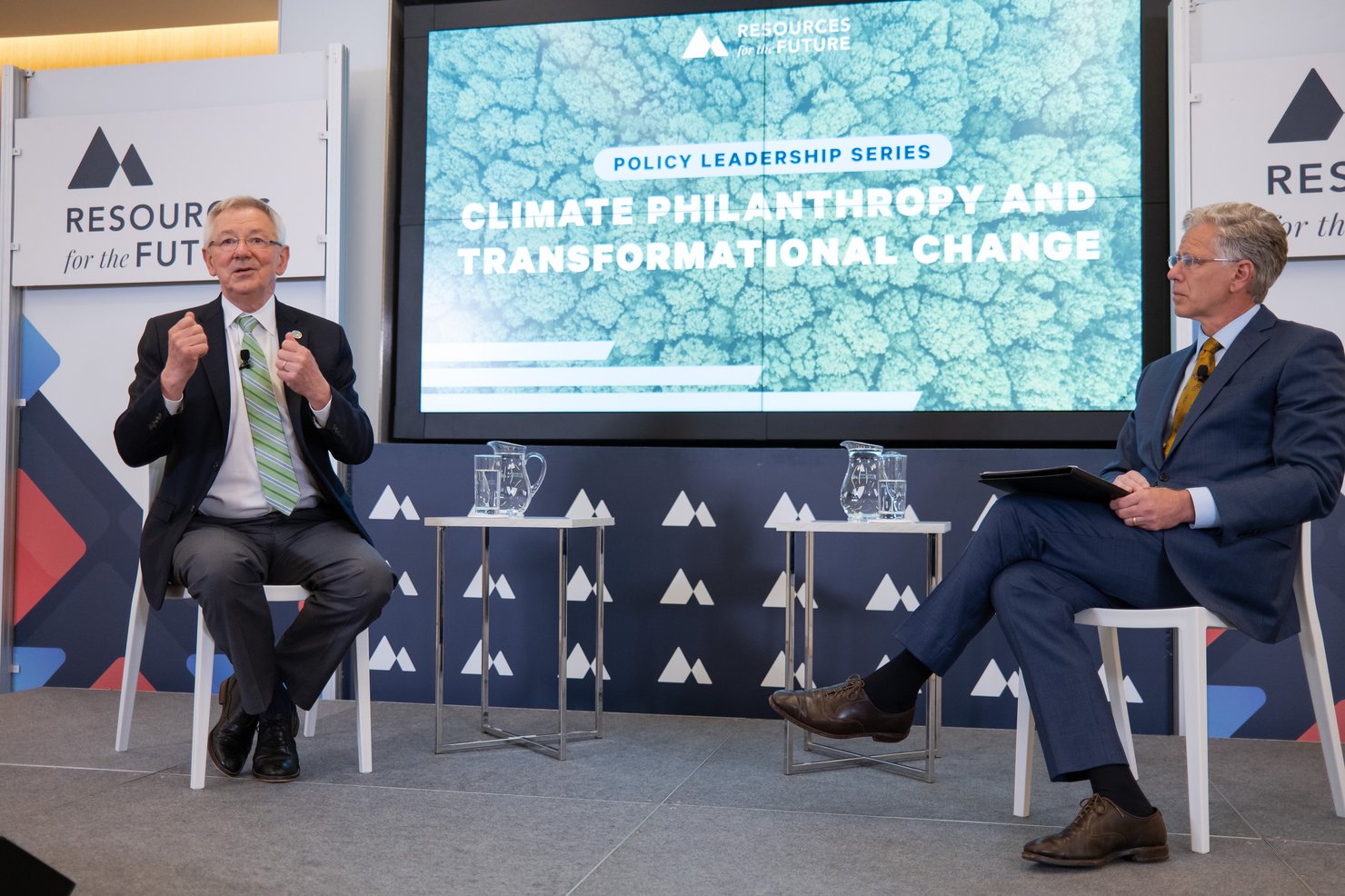Twice a month, we’re compiling the most relevant news stories from diverse sources online, connecting the latest environmental and energy economics research to global current events, real-time public discourse, and policy decisions. Keep reading, and feel free to send us your feedback. Here are some questions we’re asking and addressing with our research chops this week:
Given last week’s Supreme Court ruling in West Virginia v. US Environmental Protection Agency (EPA), what are the possible consequences for EPA’s ability to implement climate regulations?
The Supreme Court’s 6–3 decision last week in West Virginia v. US Environmental Protection Agency (EPA) reduces EPA’s authority to regulate greenhouse gas emissions at the national level. In the ruling opinion, Chief Justice John Roberts invokes the “major questions doctrine,” arguing that a nationwide shift toward low- or zero-emissions electricity generation is a decision “of such magnitude and consequence” that it “rests with Congress itself.” Despite the ruling, EPA remains “committed to using the full scope of [its] authorities,” according to EPA Administrator Michael Regan. Experts have shared their take on the ruling in an event hosted by Resources for the Future (RFF) yesterday and in a recent blog post from RFF researchers. “Many onlookers will regard it as good news that the Supreme Court did not foreclose the regulation of carbon dioxide emissions under the Clean Air Act,” says RFF Fellow Aaron Bergman. “On the other hand, this ruling will likely make future regulations more challenging and potentially more costly.”
Public and private investments in hydrogen fuel from zero-emissions sources have been rising in size and frequency. What factors could help support the growth and success of a clean hydrogen economy?
So-called “green hydrogen,” hydrogen fuel produced using renewable energy, has received growing support across the globe: Airbus, Siemens, and a trio of South Korean companies including Samsung are some recent investors in the technology. In the United States, the Department of Energy (DOE) approved a $504-million loan in June to build the Advanced Clean Energy Storage project in Utah, the “world’s largest clean hydrogen and energy storage project.” But the success of the project depends on the development of a hydrogen economy and “a clean energy future that has yet to emerge.” In a blog post that accompanies an issue brief published last week, RFF Senior Fellow Alan Krupnick, Research Analyst Lucie Bioret, and Fellow Jhih-Shyang Shih evaluate the design of a new $8-billion H2Hubs program from DOE that could support projects like the one in Utah with the aim of developing a national clean hydrogen network. “The H2Hubs program faces daunting challenges,” the authors say in the blog post. “To really get it off the ground, we’ll need dramatic reductions in the cost of producing low-emissions hydrogen, alongside enough demand to use that production.”
What lessons can policymakers learn from the rise and fall of minimum offer price rules in electricity markets?
Minimum offer price rules (MOPRs) are on the way out of electricity markets. In May, the Federal Energy Regulatory Commission (FERC) approved proposals by New York’s and New England’s regional transmission organizations to phase out their MOPRs. The rules originally were intended to stimulate competition in electric capacity markets. But when MOPRs were expanded to limit state-subsidized renewables projects, the rules ended up undermining consumer interests, state policy objectives, and environmental health. As the dust settles on these recent MOPR reversals, RFF Visiting Fellow Todd Aagaard, Senior Fellow Karen Palmer, and Research Associate Molly Robertson consider the lessons we can glean from these contentious rules in a blog post they published this week. “Federal and state governments should regard the MOPR controversy as a cautionary tale and pursue diverse policies,” they say, “without sacrificing comity among governments.”

Expert Perspectives
Supreme Court Decision in West Virginia v. EPA Reduces EPA’s Ability to Act without Congressional Authorization
The Supreme Court’s ruling in West Virginia v. EPA last week invokes the “major questions doctrine,” which holds that Congress should be explicit in delegating regulatory authority to an executive agency when the agency’s authority covers issues of “vast economic and political significance.” The ruling ultimately means that EPA now can regulate greenhouse gas emissions at the level of individual power plants but cannot regulate the electricity system at the national level.
One concern with invoking the major questions doctrine in this context is that, whenever a major issue comes up, Congress, the executive branch, and the Supreme Court need to play slow-motion ping-pong to agree on an appropriate regulatory approach before taking action. “The major questions doctrine is being used to say that the agency has to go back to Congress for new authority each time a major new risk arises,” says Jonathan Wiener, a legal scholar and RFF university fellow, in a recent Resources magazine article. “That obviously poses a timing problem.”


Climate Philanthropy and Transformational Change
In June, RFF hosted a Policy Leadership Series event with Andrew Steer, the president and CEO of the Bezos Earth Fund. Born out of a $10-billion commitment from Amazon founder Jeff Bezos, the Earth Fund is a philanthropic organization that funds efforts to address climate change and protect nature. In conversation with RFF President and CEO Richard G. Newell, Steer summed up the state of the energy transition: “The question is, Is it going in the right direction? Yes. Is it going fast enough? No.” Listen to their discussion in the new episode of RFF’s Policy Leadership Series Podcast.
Industrial Decarbonization and Competitiveness: Building a Performance Alliance
The latest in a series of issue briefs coauthored by RFF’s Ray Kopp, Billy Pizer, and Kevin Rennert explores the potential for international cooperation among nations that are working toward decarbonization. “Alliances could be new multilateral institutions,” they write, “providing technical assistance, expanded capacity, and investment resources to developing countries seeking to decarbonize their industrial sectors, accelerating industrial decarbonization beyond the typical focus on developed countries.” A previous issue brief in the series outlines an approach to define a benchmark for setting international carbon tariffs on certain products.
Accounting for the Value of Ecosystems in Climate Policy
A recent article in the journal Nature Climate Change by RFF Fellow Hannah Druckenmiller addresses “advances in data and methods” that will enable researchers and policymakers to better estimate the economic costs of climate change impacts on ecosystems and include those costs in policymaking. “Incorporating ecosystem impacts into climate policy is by no means straightforward,” says Druckenmiller, “but it is worth the effort.”
The Future of Energy Storage
In a recent episode of the Resources Radio podcast, MIT Professor Emeritus and RFF Board of Directors Chair Emeritus Dick Schmalensee covers the takeaways from his recent study about the future of energy storage, along with related insights and implications for current and future policy. “Storage plays a potentially huge role in systems that are dominated by wind and solar generation,” says Schmalensee, “because it in effect moves generation from one time to another.”
New Podcast from RFF Partner Institution Featured This Week on Resources Radio
One of RFF’s closest partner organizations in Europe, the Euro-Mediterranean Center on Climate Change, recently launched its own podcast series called Foresight: Deep into the Future Planet. The first episode investigates the future of climate change, acknowledging that the planet is being shaped by today’s ideas, solutions, and decisions. “We’ve gone from not talking about [climate change], to wanting to let people know what’s going on, to being told we just need to prepare for the really extreme weather events and problems,” says Carolina Aragón in the episode. Aragón is an artist and assistant professor at the University of Massachusetts Amherst. “That is a big, big leap.”

#ChartOfTheWeek

When renewable energy operators generate more electricity than the market demands, the operators often have to “curtail” production by turning off their wind farms or solar parks. The chart above shows recent curtailment trends in California for the past several years. Hydrogen-fuel facilities like the Advanced Clean Energy Storage project in Utah may be able to help avoid curtailments by storing excess electricity and delivering that energy to the market when the demand returns.







